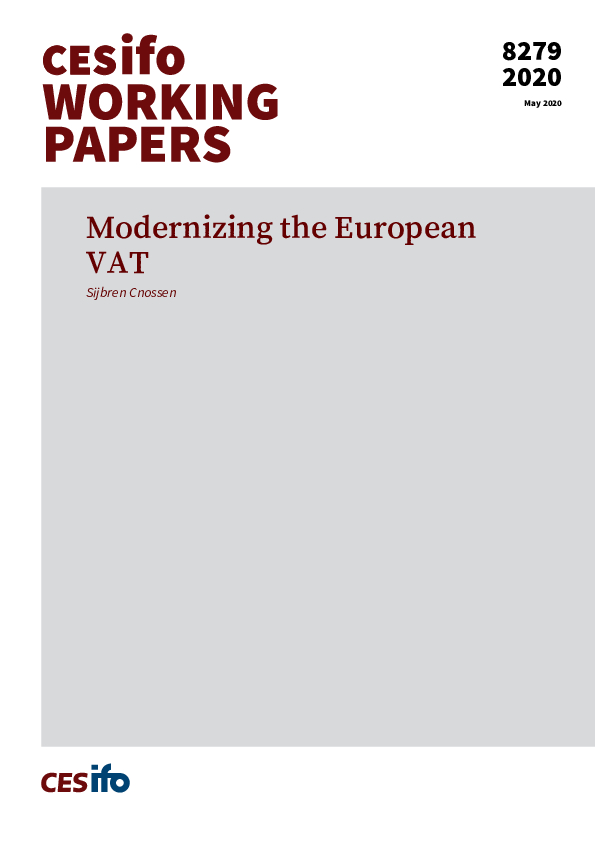Modernizing the European VAT
CESifo, Munich, 2020
CESifo Working Paper No. 8279

The harmonized European value-added tax (VAT) is anything but a modern consumption tax that taxes all goods and services at a uniform rate. As exemplified by an analysis of the Dutch version, some 60% of the base is exempted, that is, not taxed on output but on inputs. This has serious consequences.
The VAT exemptions distort input choices, stimulate uneconomical self-supply, and complicate administration and compliance. The welfare costs of the exemptions can be estimated at one half of one percent of gross domestic product (GDP).
Research shows that under an equal yield assumption, the elimination of the exemptions and the introduction of a single rate in conjunction with a reduction in the standard rate should foster economic growth.
The Member States of the European Union (EU) should be allowed to replace their defective VATs with a modern version. This would strengthen competitive conditions.